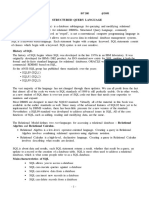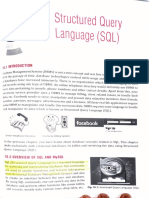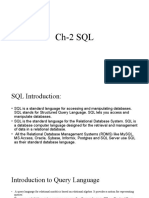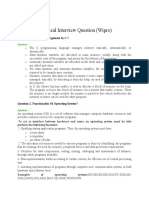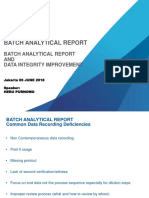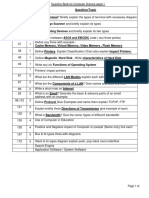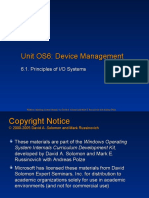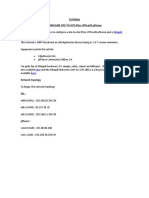INTRODUCTION ABOUT SQL
Structured query language (SQL) is a programming
language for storing and processing information in a
relational database. A relational database stores
information in tabular form, with rows and columns
representing different data attributes and the
various relationships between the data values. You
can use SQL statements to store, update, remove,
search, and retrieve information from the database.
You can also use SQL to maintain and optimize
database performance.
Structured query language (SQL) is a popular query
language that is frequently used in all types of
applications. Data analysts and developers learn and
use SQL because it integrates well with different
programming languages. For example, they can
embed SQL queries with the Java programming
language to build high-performing data processing
applications with major SQL database systems such
as Oracle or MS SQL Server.
SQL was invented in the 1970s based on the
relational data model. It was initially known as the
structured English query language (SEQUEL). The
term was later shortened to SQL. Oracle, formerly
known as Relational Software, became the first
vendor to offer a commercial SQL relational
database management system.
INTRODUCTION ABOUT SQL
Structured query language (SQL) commands are
specific keywords or SQL statements that developers
use to manipulate the data stored in a relational
database. You can categorize SQL commands as
follows.
Data definition language
Data definition language (DDL) refers to SQL
commands that design the database structure.
Database engineers use DDL to create and modify
database objects based on the business
requirements. For example, the database engineer
uses the CREATE command to create database
objects such as tables, views, and indexes.
Data query language
Data query language (DQL) consists of instructions
for retrieving data stored in relational databases.
Software applications use the SELECT command to
filter and return specific results from a SQL table.
Data manipulation language
Data manipulation language (DML) statements write
new information or modify existing records in a
INTRODUCTION ABOUT SQL
relational database. For example, an application
uses the INSERT command to store a new record in
the database.
Data control language
Database administrators use data control language
(DCL) to manage or authorize database access for
other users. For example, they can use the GRANT
command to permit certain applications to
manipulate one or more tables.
Transaction control language
The relational engine uses transaction control
language (TCL) to automatically make database
changes. For example, the database uses the
ROLLBACK command to undo an erroneous
transaction.
INTRODUCTION ABOUT SQL









